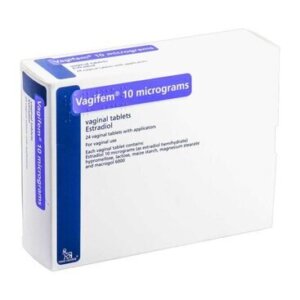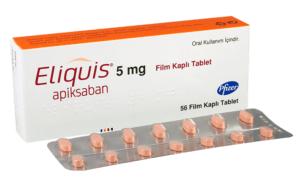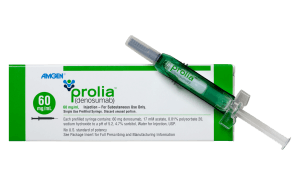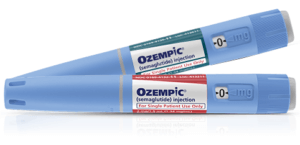
To address the sudden shortages that had plagued the market, we have expanded our range to include new formats of these essential medications.
How does IsraelPharm help with medication shortages like Wegovy and Zepbound?
Welcome to compounded semaglutide (Ozempic / Wegovy) and compounded tirzepatide (Mounjaro / Zepbound). The whole story of how this strange situation came into being is in itself interesting, but I’d like to start by first by sharing how we were able to adapt to the shortages and supply our customers with safe and affordable alternatives to brand-name weight loss medications.
Thanks to our wide network of associate pharmacies in most US states, we can now accept orders for Mounjaro and Zepbound and supply easy weight loss equivalents in the form of compounded tirzepatide.
Additionally, we can supply a batch of doses of compounded tirzepatide that has been tailored to exactly match the prescription at far lower prices than the equivalent pre-packaged drugs sold in pharmacies in the US.
What are compounded medications?
We published a comprehensive Guide to compounded medications in 2023 back when this activity first started. In summary, it tells a story of how retail pharmacy evolved from the older “apothecary” style in which on-the-premises pharmacists made up the medicines as prescribed from local ingredients, to the current style where pharmacists mostly sell mass-produced, pre-packaged medicines. The main forces that drove this change were the benefits of economies of scale (cheaper drugs) and guaranteed supply.
What are the differences between branded drugs and compounded drugs?
All drugs contain one or more active components (known as the “generics”). Nova Nordisk’s drug Ozempic contains a glucagon-like peptide-1 receptor agonist (GLP-1RA) as the main ingredient. Eli Lilly and Company’s Mounjaro contains GLP-1RA and glucose-dependent insulinotropic polypeptide (GIP). Both of the companies hold patents for those drugs, and no other company can manufacture and sell in competition. However, exclusive rights to the generics don’t belong to the companies, only the specific format in which the drugs were submitted to the FDA for approval. This means that a duly qualified doctor (or pharmacist) can use the generic compounds in some different way (compound it with some other ingredients) so that the effect of the drug they produce matches the branded drug.
The bottom line is that a compounded medication is produced using the same generic compound that is contained in the branded drug. It is made by a qualified doctor or pharmacist to meet the specifications of the written prescription. There may be some small changes in the total makeup of the drug that is delivered (for example, Compounded Tirzepatide comes with the addition of vitamin B6 – pyridoxine). Still, the effect and effectiveness are the same.
Introducing Compounded Tirzepatide, your easy weight loss alternative
Tirzepatide is the generic name for a combination of GLP-1 RA and GIP (glucagon-like peptide-1 receptor agonist + glucose-dependent insulinotropic polypeptide.) GLP-1 and GIP are two incretins that increase the release of insulin. The referred website explains that GLP-1 analogs work by “increasing the levels of … incretins. These hormones help the body produce more insulin when needed and reduce the amount of glucose being produced by the liver when it’s not needed. Incretins also slow down the digestion of food so that glucose from your meals takes longer to be absorbed, and they can reduce your appetite and result in weight loss.
GLP-1 analogs reduce the symptoms of high blood glucose levels (such as feeling thirsty). In the long term, good control of blood glucose levels reduces the risk of developing problems with your eyes, kidneys, and feet. Most people taking GLP-1 analogues also lose weight which can be beneficial for a lot of people with type 2 diabetes. Some GLP-1 analogs have also been shown to have additional benefits in protecting against heart disease and stroke.”
Combining GLP-1 and GIP for treating diabetes means that there is a backup in case one doesn’t work adequately, as well as a boost to the total efficiency of each molecule. It’s earned the term “twincretin” and explained why Mounjaro achieved marginally better results in treating diabetes than Ozempic, as measured in the SURPASS-2 trials that matched them head-to-head. You can read a more detailed article explaining the merits of Mounjaro vs Ozempic here.
What is so special about Mounjaro and Ozempic that created such a shortage?
There was a revolution early in the life of Ozempic after its launch in 2017. It offered many positive features in treating diabetic patients that made it widely preferred to the daily meds that were considered the “gold standard” for treating type 2 diabetes before it came along. This gave Ozempic a strong foothold in the market, attracting much attention from the roughly 9-10% of the adult population that lives with diabetes. Ozempic contains semaglutide, a glucagon-like peptide-1 receptor agonist (GLP-1RA). GLP-1 is a hormone produced in the gut that boosts insulin production, slows down the passing of food out of the stomach (leaving people feeling satisfied for longer after a meal), and triggers appetite suppression directly in the brain.
Very soon after Ozempic became a widely used drug for diabetics, it was reported that the patients taking it were losing substantial weight, even those who didn’t have any problems with their waistlines. This threw a new focus on what GLP-1 could do for people who had battled with weight problems all their lives. After the completion of five separate detailed trials (the STEP trials), the conclusions were drawn that overweight or obese adults receiving a weekly subcutaneous injection of semaglutide plus moderate diet and exercise were likely to undergo substantial, sustained, and clinically relevant weight loss.
A few years after Ozempic reached the market, a new drug called Mounjaro began to climb the popularity ladder as a treatment for diabetes. Like Ozempic, it uses GLP-1 but also has a second component (a glucose-dependent insulinotropic polypeptide or GIP). This combination has the generic name tirzepatide.
Along with the improvement in diabetes control, both tirzepatide and semaglutide demonstrated strongly that they could be used to promote weight loss. However, at this early stage, the FDA only registered them as diabetes treatments. More importantly, insurance companies were only willing to pay for either Ozempic or Mounjaro for diabetic patients, not just for weight loss. Despite that, there was a worldwide surge in demand for the two drugs as promoters jumped on the publicity bandwagon and started to trumpet the merits of tirzepatide and semaglutide.
What went wrong with supplies of tirzepatide and semaglutide?
The explosion in demand for both of these drugs as treatments for weight loss took the manufacturers by complete surprise. Capacity planning had been based on getting a fair share of the market represented by adult diabetics. That comprised at most 10% of the adult population – say thirty million people in the US, and about the same in the other major advanced economies. Instead, they faced demand from more than 100 million people in the US and approximately 120 million in the rest of the Western world who are overweight or obese.
Very quickly, even though factories were running at full capacity, supplies were exhausted, and worldwide shortages followed. There’s no way to turn on a spigot to get additional supplies of specialized drugs like tirzepatide and semaglutide. It takes years of planning, construction, and fitting out with complex (and very expensive) equipment before a new production facility can come online. Nothing could be done to solve the problem, even in the medium term. In the meantime, people were suffering through no fault of their own.
And now you understand the impetus that led us to find alternative supplies of an easy weight loss alternative for our customers. We are grateful to be able to offer safe and affordable access to compounded tirzepatide and compounded semaglutide to fill the shortages in the drugs our customers require to maintain good health.
















